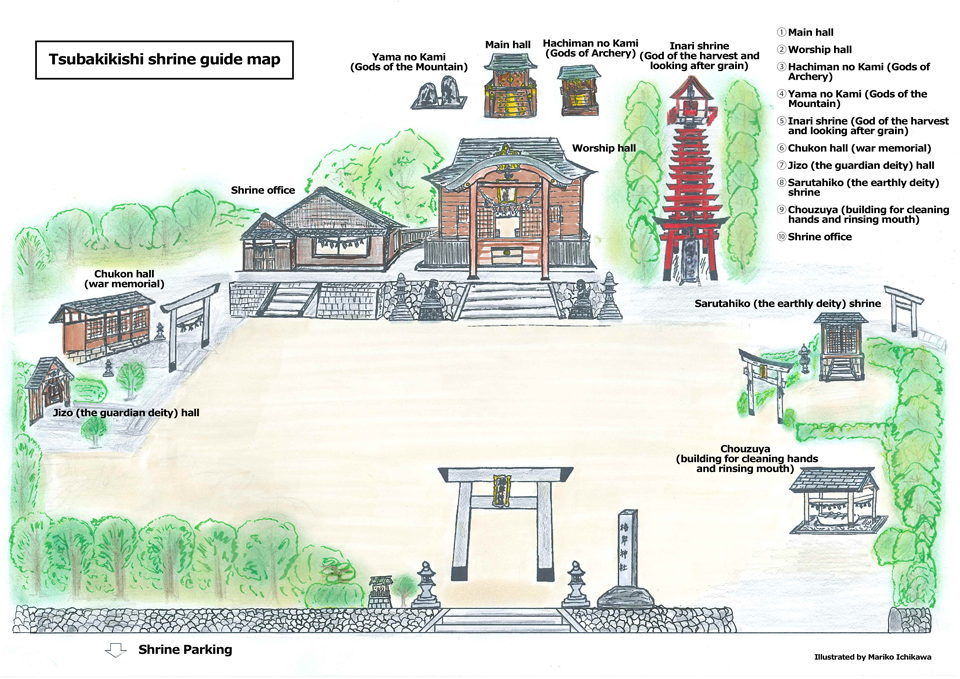
Premise information


It was rebuilt with combined two anniversaries in 2009, the 62th Shikinensengu anniversary (transfer of a deity to a new shrine building once in a prescribed number of years) of Ise Jingu and the 100th enshrined together after Meiji period anniversary.

The hall has a ceiling shaped like the bottom of a boat with high centre and the inside has a scent of ground cedar.

It used to be tatami carpeted; it was swapped to chairs for elders and worshippers.

After you entered through the Torii (an entrance gate), worshippers cleanse their hands and mouth.

Main Goddess Amanouzumeno Mikoto at this shrine and Sarutahiko God are married couple. For this reason, the main hall was moved and Sarutahiko shrine was enshrined.

During the civil war period, going through many transitions since Heian period, Matsuki family head, Munetsuna came to this area to avoid war. The next family head, Munefuji settled his daughter, princess Kaga to the west at Kaga estate. He had a long life and lived until 99 years old even after Matsuki family went back to Kyoto.
Fushimi Inari was dis-enshrined at the last stage of his life and Kota shrine was built in Daimon (south of present Sakura community hall). At the end of Meiji period, it was combined with Tsubakikishi shrine and once removed, but Inari shrine was rebuilt in 1960 responding to the local people missing the old shrine.

